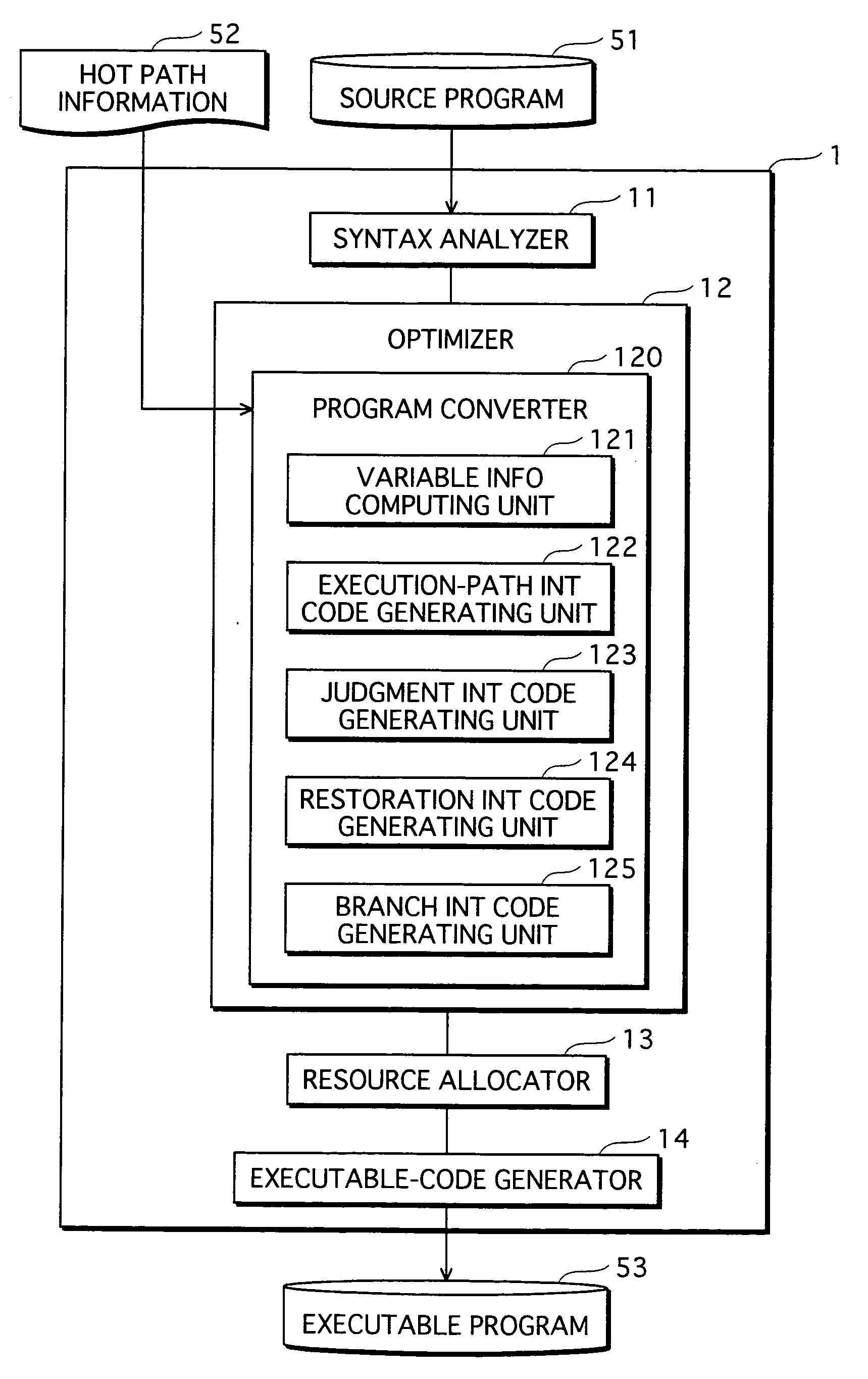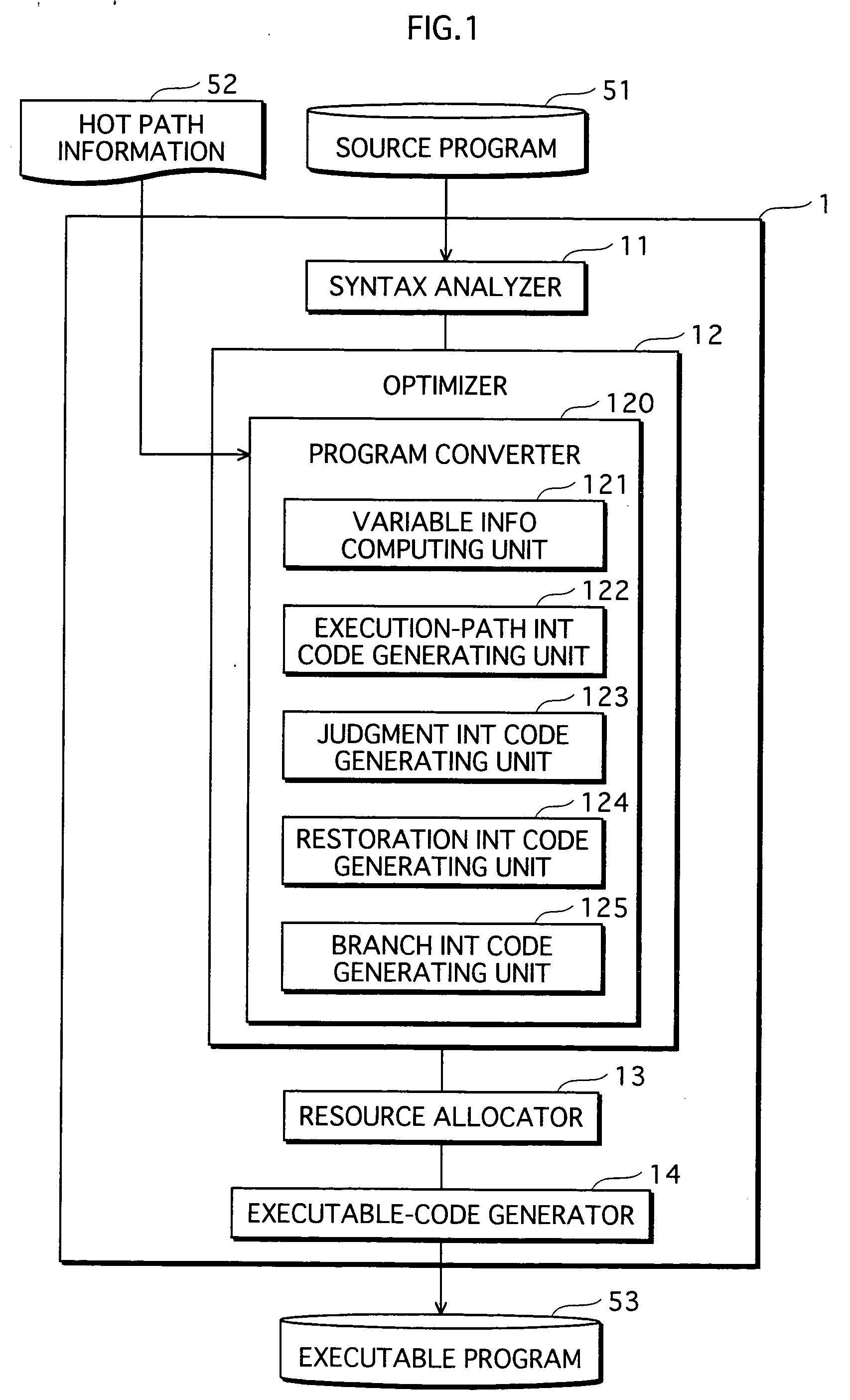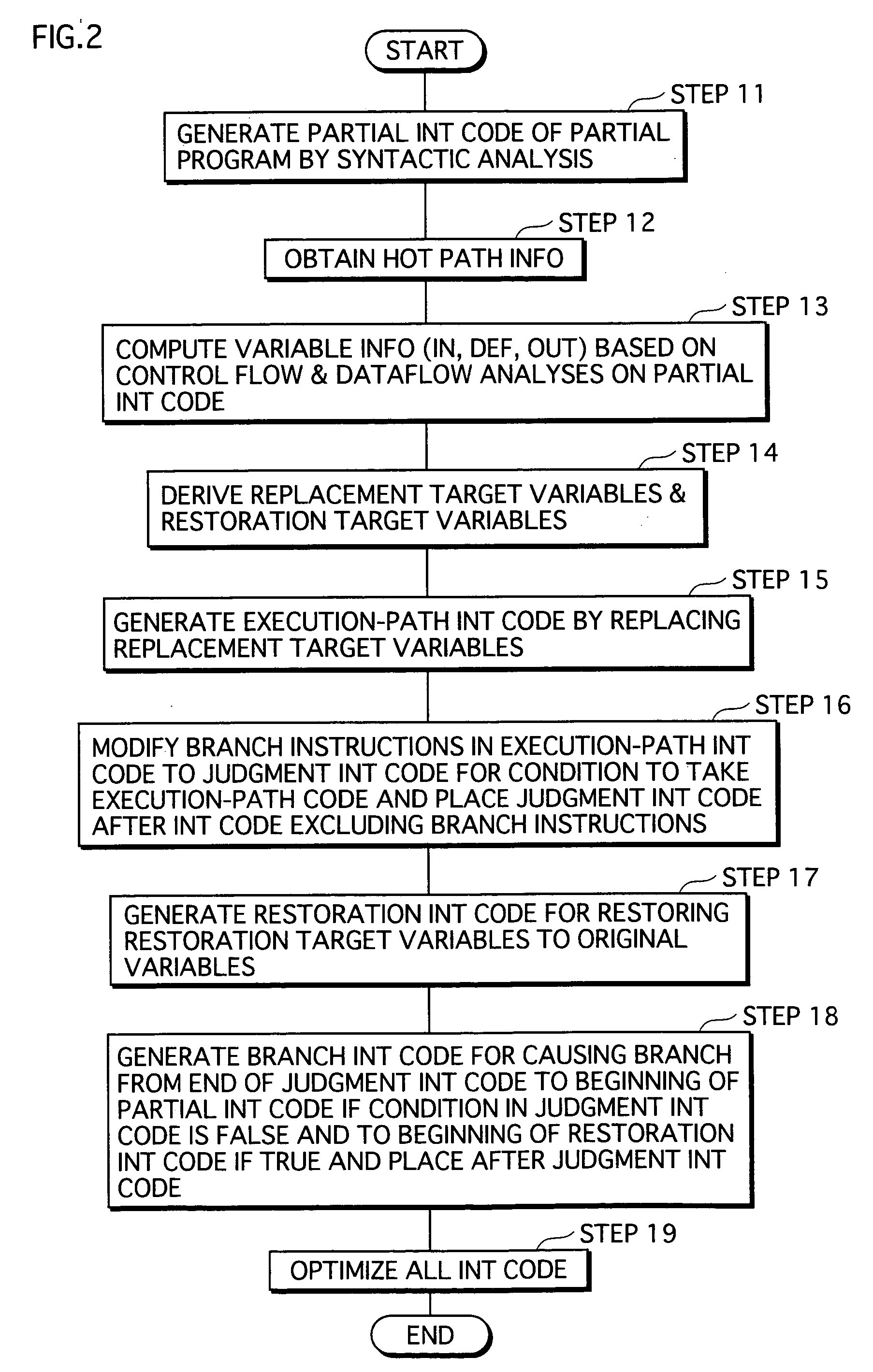Compiler, compilation method, and compilation program
a compilation method and compiler technology, applied in the field of compilers, can solve the problems of no longer maintaining program integrity, limited effect of local optimization within basic blocks, and inability to expand basic blocks, so as to improve execution speed
- Summary
- Abstract
- Description
- Claims
- Application Information
AI Technical Summary
Benefits of technology
Problems solved by technology
Method used
Image
Examples
embodiment
[0046] According to one embodiment of the present invention, a compiler (i) reads a source program, (ii) performs a lexical analysis that is a process of breaking the source program into a sequence of symbols called “lexical tokens”, (iii) performs a syntactic analysis that is a process of building a syntactic tree structure based on the lexical tokens, (iv) generates, based on the syntactic tree structure, an intermediate program written in a specific intermediate language used by the compiler, (v) optimizes the intermediate program by, for example, instruction scheduling and allocates resources, such as registers, to variables, and (vi) converts the optimized intermediate program to an executable program.
Structure
[0047]FIG. 1 is a functional block diagram showing an overall structure of a compiler 1 according to the embodiment.
[0048] The compiler 1 is composed of such functional blocks as a syntax analyzer 11, an optimizer 12, a resource allocator 13, and an executable-code ge...
operation examples
[0099] Next, a specific example is given to the operation flow shown in FIG. 2, using the partial source program shown in FIG. 5A. FIGS. 5B and 9-12 are also referenced in the following description. In this example, it is assumed that the intermediate code is relatively close to the source program.
[0100] In the step 11, the syntax analyzer 11 syntactically analyzes the partial program and generates partial intermediate code. The thus generated partial intermediate code is stored within the compiler 1.
[0101] Next, in the step 12, the program converter 120 receives hot path information that specifies, as a hot path, a path 200 sequentially connecting the basic blocks B1, B2, B4, B5, and B7 shown in the control flow graph (FIG. 5B). Upon receipt, the program converter 120 stores therein the hot path information.
[0102] In the step 13, the optimizer 12 carries out the control flow and data flow analyses. Based on the analyses, the variable information computing unit 121 computes liven...
modification 1
[0121] According to the above embodiment, the judgment intermediate code generating unit 123 generates the branch instruction S201 that includes a branch condition for executing the hot path, by connecting the branch conditions S32 and S92 shown in FIG. 9 using logical AND. Yet, as in a statement S202 shown in FIG. 13, it is applicable to invert the branch conditions S32 and S92.
[0122] In addition, it is applicable to make an arrangement as shown in FIG. 13, so that the partial program is executed as a subroutine and a path connecting newly generated basic blocks B114 and B103 is taken as a main execution path. For this purpose, the basic block B114 is placed at a position immediately after the statement S0 which is the last statement in the basic block B0 immediately preceding the partial program. In addition, the basic block B103 is placed at a position immediately before the statement S17 which is the first statement in the basic block B8 immediately following the partial progra...
PUM
 Login to View More
Login to View More Abstract
Description
Claims
Application Information
 Login to View More
Login to View More - R&D
- Intellectual Property
- Life Sciences
- Materials
- Tech Scout
- Unparalleled Data Quality
- Higher Quality Content
- 60% Fewer Hallucinations
Browse by: Latest US Patents, China's latest patents, Technical Efficacy Thesaurus, Application Domain, Technology Topic, Popular Technical Reports.
© 2025 PatSnap. All rights reserved.Legal|Privacy policy|Modern Slavery Act Transparency Statement|Sitemap|About US| Contact US: help@patsnap.com



